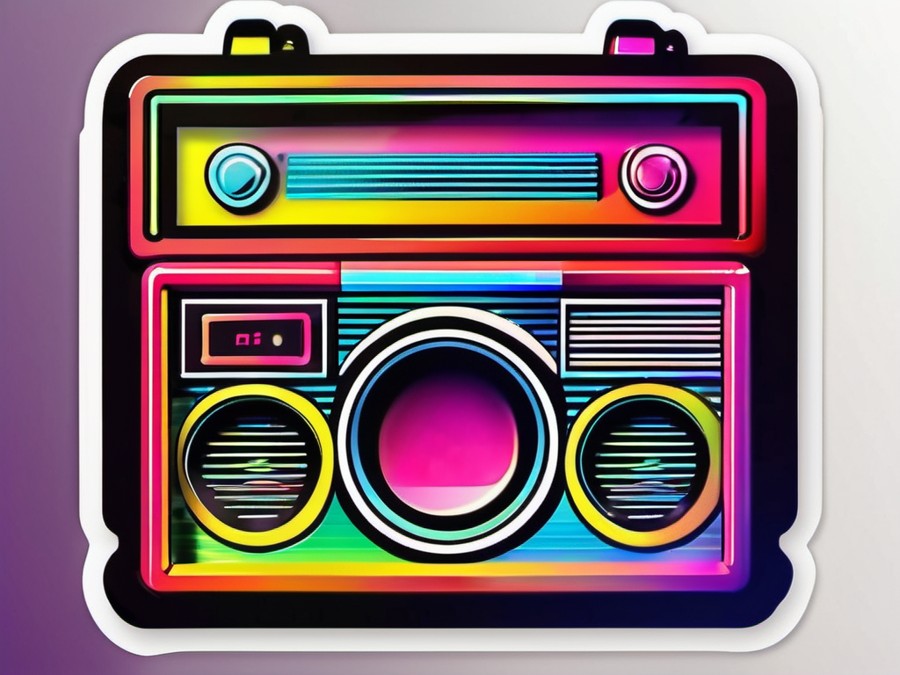· Charlotte Will · Car Audio · 9 min read
What is a Car Subwoofer and How Does it Work?
Discover how car subwoofers work, their benefits, and installation tips. Elevate your car audio experience with the right subwoofer for deeper, richer bass. Learn from real-life examples and bust common myths about car subwoofers.

Ever wondered how your favourite tunes get that deep, thumping bass in your car? The answer lies in the car subwoofer, a crucial component of any decent car audio system. Let’s dive into what a car subwoofer is, how it works, and why you need one to elevate your driving experience.
Why You Need a Car Subwoofer
Imagine listening to your favourite tracks without that rich, full-bodied bass. It’s like eating pizza without cheese—it just doesn’t feel complete, right? A car subwoofer adds that missing depth and warmth to your music, making every drive feel like a party on wheels.
Enhancing Your Car Audio Experience
A good subwoofer can transform your car audio experience from bland to exhilarating. It helps to emphasise the low frequencies in your music, giving it a fuller, more dynamic sound. Whether you’re into rap, rock, or classical music, a subwoofer brings out the best in every genre.
Adding Depth to Your Music
Ever noticed how some songs have a certain ‘punch’ that makes you nod your head or tap your feet? That ‘punch’ is the bass, and a subwoofer amplifies it, adding depth and dimension to your tunes. It’s not just about the volume; it’s about the quality and richness of sound.
Types of Car Subwoofers
Not all subwoofers are created equal. There are different types, each with its own strengths and ideal uses:
Sealed Enclosures
Sealed enclosures, also known as acoustic suspension enclosures, offer a balanced, tight bass response. They’re great for those who prefer a cleaner, more controlled sound.
Ported Enclosures
Ported enclosures, on the other hand, feature ports or vents that allow air to move in and out. This design boosts the bass output, making it ideal for those who crave deeper, louder lows.
Bandpass Enclosures
Bandpass enclosures are a bit more complex, using two chambers to enhance the bass response. They’re typically used in high-end systems and can provide a powerful, intense bass.
Understanding the Tech Behind Car Subwoofers
To appreciate how a car subwoofer works, let’s break down some key tech terms:
Frequency Response
This refers to the range of frequencies a subwoofer can reproduce. A good frequency response ensures that your subwoofer can handle the low frequencies in your music without distortion.
SPL (Sound Pressure Level)
SPL measures the loudness of a sound. In simpler terms, it’s how loud your subwoofer can get. A higher SPL isn’t always better; it’s about finding the right balance for your needs.
dB (Decibel)
dB is a unit used to measure the intensity of sound. In terms of subwoofers, it’s about how much power they can handle. More power means louder, more intense bass.
How Car Subwoofers Work
At the heart of it, a subwoofer is essentially a large speaker designed to reproduce low frequencies. Here’s how it works:
- Electrical Signal: The audio signal from your music player is sent to the subwoofer.
- Amplification: The signal is amplified, giving it the power needed to move the subwoofer cone.
- Cone Movement: The subwoofer cone (the large, circular part) moves in and out, pushing air.
- Air Displacement: The movement of the cone displaces air, creating sound waves that we perceive as bass.
The Science Behind Bass Reproduction
Bass frequencies are longer and more complex than higher frequencies. A subwoofer’s large cone and powerful amplifier are designed to handle this complexity, ensuring that the deeper notes in your music are reproduced accurately and richly.
Cone Movement and Air Displacement
Think of it like a piston in an engine. As the subwoofer cone moves out, it pushes air forward. As it moves in, it pulls air back. This back-and-forth motion creates the sound waves that give you that satisfying thump.
Choosing the Right Car Subwoofer
With so many options out there, how do you choose the right subwoofer for your car? Here are some key factors to consider:
Size and Power Handling
Larger subwoofers generally offer more bass output, but they also require more space and power. Smaller subwoofers are more compact but may not hit as hard. Find the right balance for your car and preferences.
Matching Subwoofers with Amplifiers
A subwoofer needs an amplifier to boost the audio signal. Matching them correctly is crucial. Look at the power handling and impedance specifications to ensure compatibility.
Installing a Car Subwoofer
Installing a subwoofer can be a rewarding DIY project, but it helps to know what you’re doing. Here’s a step-by-step guide:
Preparation
Before you start, have a clear plan. Know where you want to place your subwoofer and how you’ll run the wires. Gather all necessary tools and equipment, including wire strippers, screwdrivers, and a multimeter.
Wiring
- Power Wires: Connect the red wire (positive) to a constant power source, like your car’s battery.
- Ground Connection: Connect the black wire (negative) to a clean, bare metal surface in your car.
- Remote Wire: This connects to a switched power source, allowing the subwoofer to turn on and off with your car’s ignition.
Mounting the Subwoofer
Choose a location that offers enough space and is well-ventilated to prevent overheating. Securely mount the subwoofer, using screws or bolts as needed. Ensure it’s tight and stable to prevent rattling or vibrations.
Connecting the Amplifier
- Power and Ground: Connect the amplifier’s power and ground wires to your car’s battery and a clean metal surface, respectively.
- Remote Wire: This wire should be connected to the same switched power source as your subwoofer.
- RCA Cables: Connect the RCA cables from your head unit to the amplifier’s input.
- Speaker Wires: Connect the speaker wires from your amplifier to your subwoofer.
Setting Up Crossovers
A crossover is a filter that sends only the right frequencies to your subwoofer. Setting it up correctly ensures that your subwoofer handles only the low frequencies, while your other speakers handle the higher ones.
Troubleshooting Common Issues
Even the best-installed subwoofers can run into issues. Here’s how to tackle some common problems:
No Sound or Distorted Sound
- Check Connections: Make sure all wires are properly connected and secure.
- Inspect Fuses: Blown fuses can cause these issues. Replace them if necessary.
- Amplifier Settings: Ensure your amplifier’s settings are correct and not causing distortion.
Weak Bass Output
- Power Matching: Ensure your amplifier’s power output matches (or slightly exceeds) your subwoofer’s power handling.
- Enclosure Type: Consider switching enclosures if you want more or less bass output.
- Crossover Settings: Adjust the crossover settings to ensure your subwoofer is receiving only the low frequencies.
Upgrading Your Car Audio System
A subwoofer is just one part of a complete car audio system. Upgrading other components can also greatly enhance your listening experience:
Benefits of a Full Audio System Upgrade
- Better Sound Quality: Upgrading your head unit, speakers, and amplifier can provide a dramatic improvement in sound quality.
- Increased Power and Efficiency: Modern components are designed to be more powerful and efficient, giving you better performance with less strain on your car’s electrical system.
- Enhanced Features: Newer components often come with advanced features like Bluetooth connectivity, USB ports, and integrated apps.
Tips for Optimal Performance
To get the most out of your car subwoofer, consider these tips:
Tuning Your System for the Best Sound
- Equalizer Settings: Use your head unit’s equalizer to fine-tune the sound. This can help balance out any frequencies that are too loud or soft.
- Gain Settings: Adjust the gain on your amplifier to ensure it’s providing the right amount of power without causing distortion.
Protecting Your Subwoofer and Amplifier
- Avoid Clipping: Clipping occurs when the audio signal is too strong for your amplifier, causing distortion. Monitor the output and adjust as needed to prevent damage.
- Proper Ventilation: Ensure your subwoofer and amplifier are well-ventilated to prevent overheating.
Maintaining Your Car Subwoofer
With proper care, your car subwoofer can last for many years:
Cleaning and Care Tips
- Regular Cleaning: Dust can accumulate on your subwoofer cone. Gently clean it with a soft cloth and appropriate cleaner.
- Check Wires: Over time, wires can become frayed or disconnected. Inspect them regularly and replace as necessary.
- Avoid Extreme Temperatures: Hot or cold temperatures can damage your subwoofer. Keep it in a temperature-controlled environment when possible.
The Impact of Subwoofer Size and Placement
Size and placement can greatly affect the performance of your subwoofer:
Small Subs vs. Large Subs
- Small Subs: More compact and easier to fit in smaller cars. They offer a cleaner, tighter bass but may not hit as hard.
- Large Subs: Provide a deeper, more intense bass but require more space and power.
Ideal Locations for Subwoofers
- Trunk: A common location due to the available space. Ensure it’s well-ventilated and securely mounted.
- Under Seats: Offers a cleaner look but may require more custom installation work.
- Custom Enclosures: For a truly tailored setup, consider building a custom enclosure for your subwoofer.
Common Misconceptions About Car Subwoofers
Let’s bust some myths about car subwoofers:
Busting Myths
- Myth 1: More bass means better sound. Not necessarily. Too much bass can drown out other frequencies and make the music sound muddy.
- Myth 2: All subwoofers are the same. Different types and sizes of subwoofers offer unique sound characteristics.
- Myth 3: Subwoofers are only for bass-heavy music. While they excel at bass, subwoofers enhance the overall sound of any genre.
Real-Life Examples of Car Subwoofer Installations
Check out these real-life examples to get inspired:
Case Studies and Success Stories
Learn how others have transformed their car audio experience with subwoofers. Read about different setups, challenges faced, and the resulting sound quality.
Conclusion
A car subwoofer is more than just a bass machine; it’s an investment in your driving experience. Whether you’re a casual listener or an audiophile, adding a subwoofer to your car audio system can make every drive feel like a party. Just remember to choose the right subwoofer, install it properly, and maintain it well for years of enjoyment.
So, are you ready to take your car audio to the next level? Install that subwoofer and feel the difference!
FAQs
What size subwoofer should I choose?
- The size depends on your car’s space and your bass preferences. Larger subwoofers generally offer more bass output but require more space and power.
Can I install a subwoofer myself?
- Yes, with the right tools and knowledge, you can definitely install a subwoofer yourself. Just make sure to follow safety guidelines and double-check all connections.
How much power does a subwoofer need?
- The required power depends on the subwoofer’s sensitivity and size. A general rule is to match or slightly exceed the subwoofer’s power handling with your amplifier’s output.
Can I use my car’s existing speakers with a subwoofer?
- Yes, you can. Just ensure that your head unit or amplifier’s crossover settings are correctly configured to send only the low frequencies to your subwoofer.
How can I prevent my subwoofer from rattling?
- Ensure your subwoofer is securely mounted and well-ventilated. Adjust the gain on your amplifier to prevent clipping, which can cause rattling.




